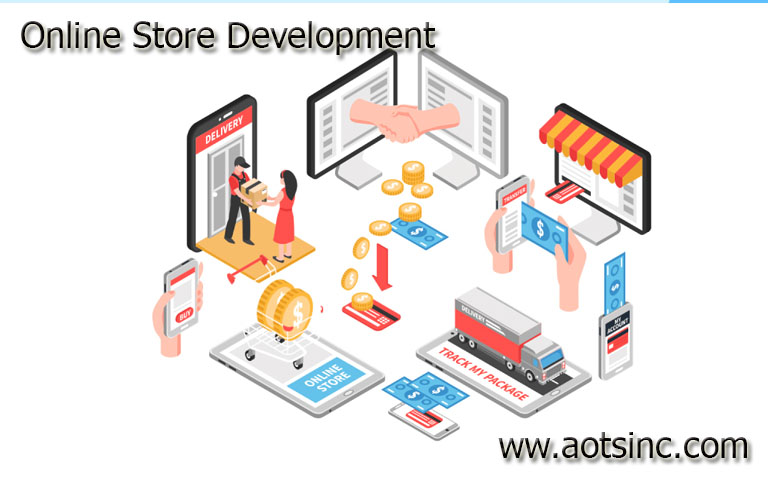Developing an online store involves several key steps. Here’s a general guide to help you get started:
Define Your Goals
- Identify your target audience.
- Clarify the products or services you want to sell.
- Determine your unique selling proposition (USP).
Choose a Platform
- Select an e-commerce platform that suits your needs. Popular choices include Shopify, WooCommerce (for WordPress), Magento, and BigCommerce.
Domain Name and Hosting
- Choose a domain name that reflects your brand.
- Select a reliable hosting provider to ensure your store’s performance and security.
Design Your Store
- Opt for a clean and user-friendly design.
- Ensure responsive design for mobile users.
- Consider the user experience (UX) and user interface (UI) design.
Product Listings
- Organize your products into categories.
- Include high-quality images and detailed product descriptions.
- Implement a search feature for easy navigation.
Shopping Cart and Checkout
- Implement a secure and easy-to-use shopping cart system.
- Streamline the checkout process to reduce cart abandonment.
- Offer multiple payment options, including credit cards, PayPal, etc.
Security
- Secure your website with an SSL certificate.
- Implement secure payment gateways.
- Regularly update your software to patch vulnerabilities.
Legal Considerations
- Display clear terms and conditions.
- Comply with privacy regulations (e.g., GDPR).
- Implement a robust refund and return policy.
Marketing and SEO
- Optimize your site for search engines (SEO).
- Utilize social media for marketing.
- Consider running online advertising campaigns.
Analytics
- Integrate analytics tools (e.g., Google Analytics) to track user behavior.
- Monitor and analyze sales data to make informed decisions.
Testing
- Test your website thoroughly before launch.
- Ensure compatibility with different browsers and devices.
Launch
- Once everything is set up and tested, launch your online store.
- Monitor for any issues and be prepared to address them promptly.
Post-Launch Optimization
- Collect customer feedback and make improvements.
- Regularly update your product offerings and website features.
Customer Support
- Provide multiple channels for customer support (live chat, email, phone).
- Be responsive to customer inquiries and concerns.
Scale and Grow
- Analyze your data to identify opportunities for growth.
- Consider expanding your product line or reaching new markets.
Remember, the success of your online store depends on ongoing optimization and adaptation to changes in the market and technology. Regularly update your site, stay informed about industry trends, and keep an eye on customer feedback to ensure a positive user experience.[https://aotsinc.com/blog/]
